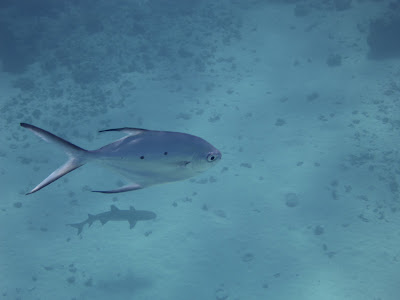Spear Fishing In The Pass
I slipped quietly into the water
and placed the butt of my spear gun against my chest heaving back on the
rubbers to load it. The first thing I
saw was a school of small silver fish with ruler length trevally hanging around
the surface. Underneath me were 3 or 4 curious grey reef sharks lurking.
I lined up a trevally aimed and shot.
The spear sprang from my spear-gun and buried itself into the
trevally. I swam quickly to the dingy
and threw my spear-gun into it before the sharks could figure out what was
happening. Then I heaved myself aboard
and donged it quickly on the head to kill it.
As we drifted further through the pass I shot a smaller goat fish while
dad shot a parrot fish, goat fish and big eye.




















